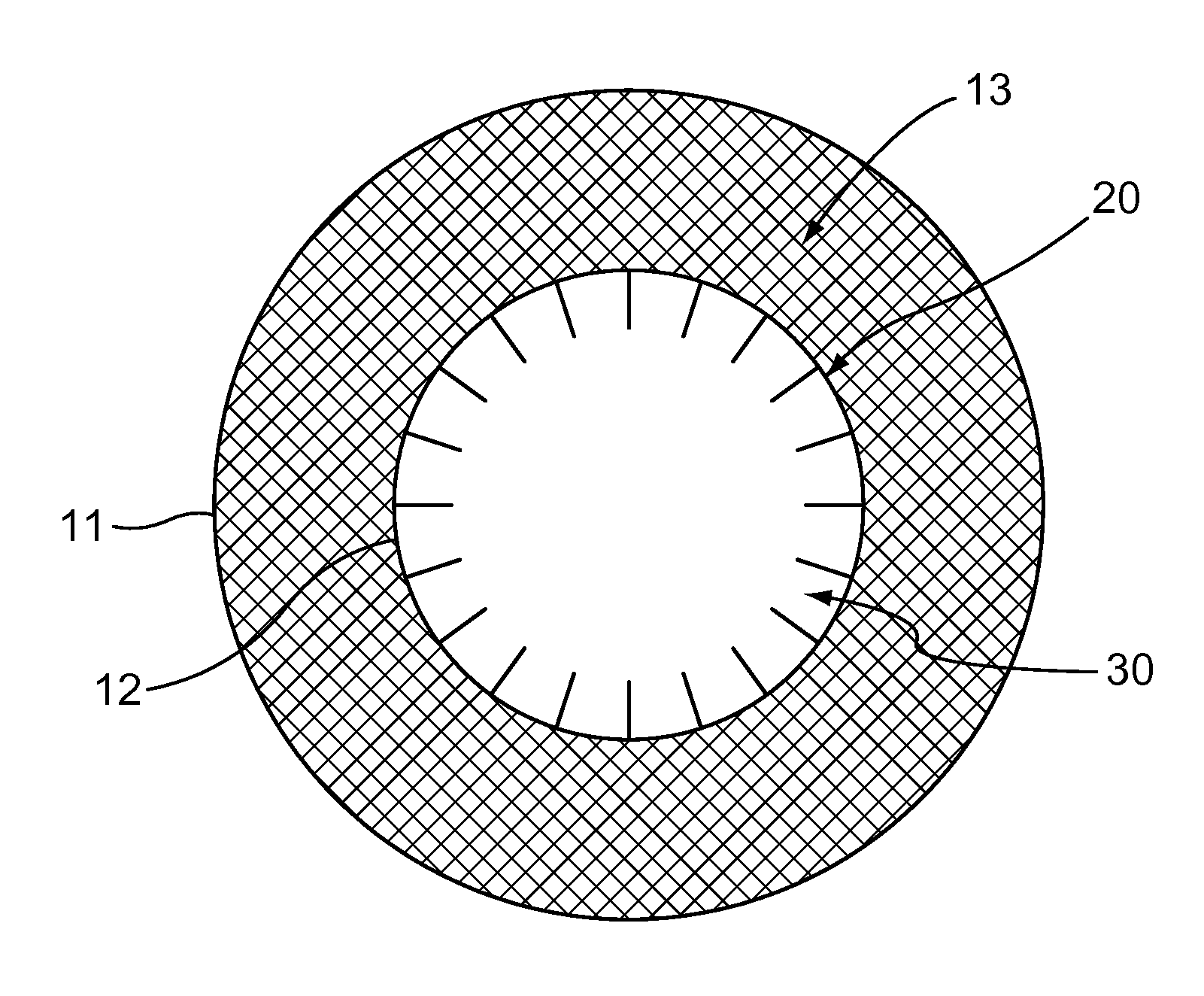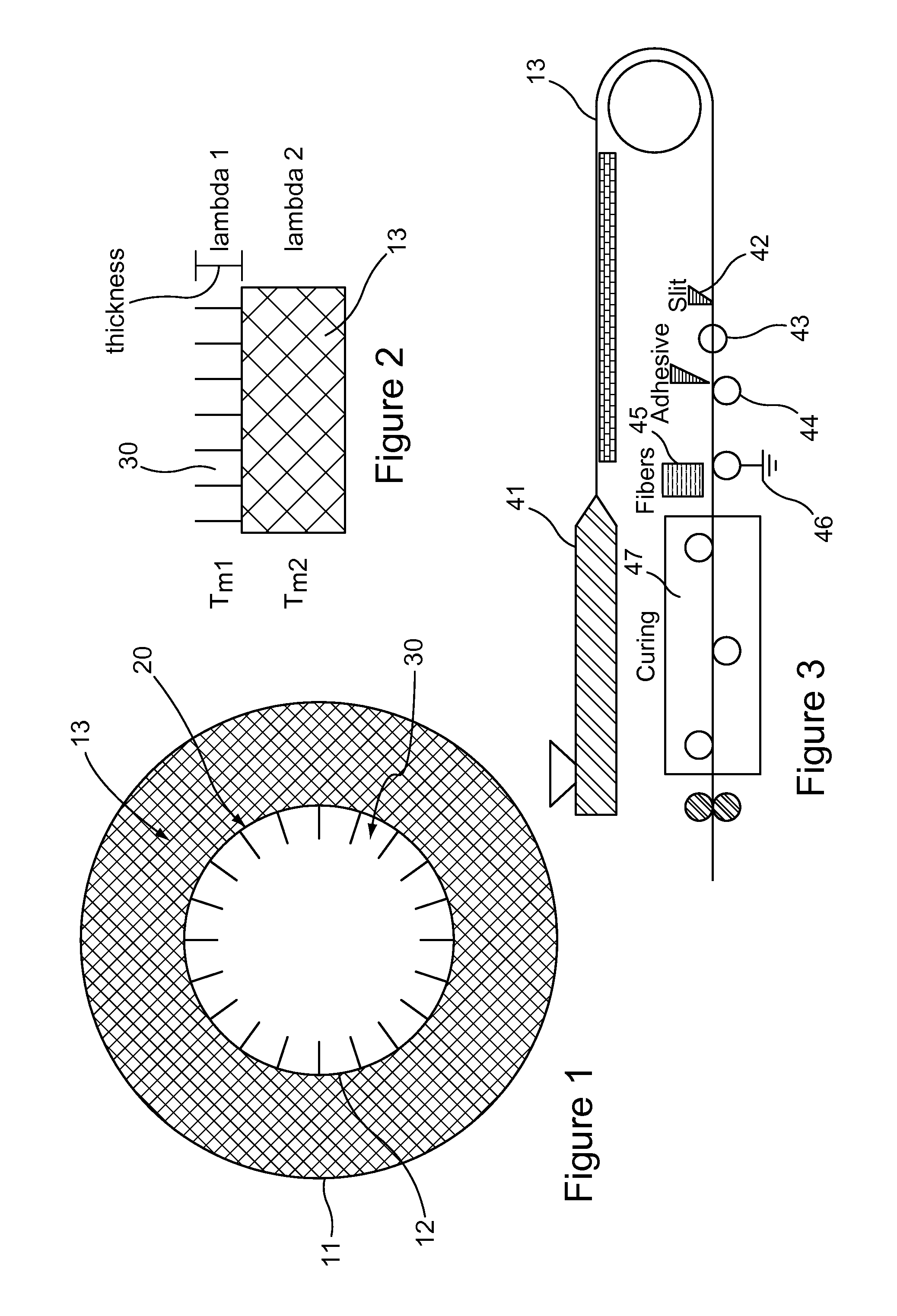Polymeric foam tube insulations and method for continuously producing such a tube
a technology of polymeric foam and pipe insulation, which is applied in the direction of rigid pipes, coatings, flexible pipes, etc., can solve the problems of limited service temperature, low thermal conductivity, and poor thermal resistance of polymeric foam, so as to improve thermal resistance and thermal conductivity
- Summary
- Abstract
- Description
- Claims
- Application Information
AI Technical Summary
Benefits of technology
Problems solved by technology
Method used
Image
Examples
example
[0035]A polyethylene tube having an internal diameter of 34 mm and a wall thickness of 10 mm is extruded using isobutene as a physical blowing agent. The product is cooled for one minute prior to on-line slitting (42), after which an adhesive is applied (44) using a specially designed die used for coatings. Immediately after applying (44) the adhesive, polyamide fibers of 22 dtex and 3 mm in length are electrostatically charged (45) using a suitable equipment. After curing of the adhesive the final step of the process, closing the tube, will be made using 350° C. hot-air nozzles to fuse the two sides back together. The final product, an internally fiber covered tube having an internal diameter of 28 mm and a wall thickness of 13 mm, with improved temperature resistance and thermal conductivity is packed in two meter tube pieces.
PUM
| Property | Measurement | Unit |
|---|---|---|
| Length | aaaaa | aaaaa |
| Fraction | aaaaa | aaaaa |
| Fraction | aaaaa | aaaaa |
Abstract
Description
Claims
Application Information
 Login to View More
Login to View More - R&D
- Intellectual Property
- Life Sciences
- Materials
- Tech Scout
- Unparalleled Data Quality
- Higher Quality Content
- 60% Fewer Hallucinations
Browse by: Latest US Patents, China's latest patents, Technical Efficacy Thesaurus, Application Domain, Technology Topic, Popular Technical Reports.
© 2025 PatSnap. All rights reserved.Legal|Privacy policy|Modern Slavery Act Transparency Statement|Sitemap|About US| Contact US: help@patsnap.com


